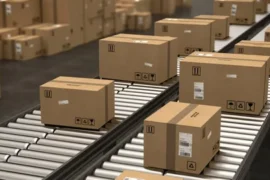Introduction
The term “Green Revolution” traditionally refers to the period between the 1940s and 1960s, marked by significant advancements in agricultural technology that led to increased crop yields. However, as we move further into the 21st century, the concept of a Green Revolution has evolved to encompass more sustainable and environmentally friendly agricultural practices.
At the heart of this modern Green Revolution are biodegradable polymers, which have emerged as key players in the quest for sustainable farming. These polymers offer a promising solution to the environmental challenges posed by traditional agricultural methods, particularly in relation to plastic waste and soil degradation.
This post will delve into the role of biodegradable polymers in sustainable agricultural practices, exploring how they contribute to the modern Green Revolution and the future of farming.

The Evolution of the Green Revolution
From Chemical Dependency to Sustainability
The original Green Revolution was characterized by the widespread adoption of chemical fertilizers, pesticides, and high-yield crop varieties. While these innovations significantly boosted food production, they also led to a range of environmental problems, including soil degradation, water contamination, and loss of biodiversity.
As awareness of these issues has grown, there has been a shift towards more sustainable agricultural practices, which aim to balance the need for food security with the preservation of the environment.
Biodegradable polymers play a crucial role in this transition by offering an alternative to traditional plastics, which are commonly used in agriculture but contribute to environmental pollution.
The Rise of Biodegradable Polymers in Agriculture
Biodegradable polymers are materials that can be broken down by microorganisms into natural substances such as water, carbon dioxide, and biomass. Unlike conventional plastics, which can persist in the environment for hundreds of years, biodegradable polymers decompose within a relatively short period, reducing their impact on the environment.
In agriculture, these polymers are used in a variety of applications, including mulch films, seed coatings, and controlled-release fertilizers. By replacing conventional plastics with biodegradable alternatives, farmers can reduce their reliance on non-renewable resources and minimize the amount of plastic waste generated by agricultural practices.
Biodegradable Polymers in Agricultural Practices
Mulch Films: A Sustainable Solution for Crop Protection
One of the most common uses of biodegradable polymers in agriculture is in the production of mulch films. These films are used to cover the soil around crops, providing a range of benefits such as moisture retention, weed suppression, and temperature regulation.
Traditionally, mulch films have been made from polyethylene, a type of plastic that is not biodegradable and often ends up as waste after use. In contrast, biodegradable mulch films can be plowed into the soil after the growing season, where they decompose naturally without leaving harmful residues. This not only reduces the environmental impact of plastic waste but also improves soil health by adding organic matter.
The use of biodegradable polymers in mulch films is an excellent example of how agricultural practices can be made more sustainable. By reducing the need for chemical herbicides and conserving water, these films contribute to the overall efficiency of farming operations. Moreover, they align with the principles of the modern Green Revolution, which emphasizes the importance of sustainability in agriculture.
Seed Coatings: Enhancing Germination and Plant Growth
Another important application of biodegradable polymers in agriculture is in seed coatings. Seed coatings are used to protect seeds from pests and diseases, as well as to enhance germination and early plant growth.
Traditionally, seed coatings have been made from synthetic materials, which can have negative environmental effects. However, biodegradable polymers offer a more sustainable alternative, as they break down naturally in the soil and do not contribute to pollution.
Biodegradable seed coatings can also be designed to release nutrients or other beneficial substances gradually, providing plants with the support they need to grow strong and healthy. This controlled-release mechanism is particularly valuable in regions with poor soil quality, where plants may struggle to access the nutrients they need.
By improving the efficiency of nutrient delivery, biodegradable seed coatings can help farmers achieve better yields while reducing the need for chemical fertilizers, further supporting the goals of the Green Revolution.
Controlled-Release Fertilizers: Reducing Environmental Impact
Fertilizers are essential for modern agriculture, but their overuse can lead to a range of environmental problems, including nutrient runoff, water pollution, and soil degradation. Controlled-release fertilizers, which are often encapsulated in biodegradable polymers, offer a solution to these issues by releasing nutrients slowly over time, in line with the needs of the plants. This not only improves the efficiency of fertilizer use but also reduces the risk of environmental contamination.
Biodegradable polymers are particularly well-suited for use in controlled-release fertilizers, as they can be designed to degrade at a specific rate, matching the nutrient requirements of different crops.
This level of precision helps to minimize nutrient loss and ensures that plants receive the right amount of fertilizer at the right time. By reducing the environmental impact of fertilizer use, biodegradable polymers contribute to the sustainability of agricultural practices and support the objectives of the Green Revolution.
Packaging and Storage: Reducing Plastic Waste in Agriculture
In addition to their use in the field, biodegradable polymers are also being used to reduce plastic waste in the packaging and storage of agricultural products. Traditional packaging materials, such as plastic bags and containers, are often discarded after use, contributing to the growing problem of plastic pollution. Biodegradable alternatives, on the other hand, can be composted or broken down naturally, reducing the amount of waste generated by agricultural practices.
The use of biodegradable polymers in packaging is particularly important in the context of the Green Revolution, as it aligns with the broader goals of reducing reliance on non-renewable resources and minimizing environmental impact.
By adopting biodegradable packaging solutions, farmers can not only reduce their environmental footprint but also appeal to consumers who are increasingly concerned about the sustainability of the products they purchase.
The Future of Biodegradable Polymers in Agriculture
Innovation and Research: Driving the Next Phase of the Green Revolution
The development of biodegradable polymers is a rapidly evolving field, with ongoing research focused on improving the performance and sustainability of these materials. Innovations in polymer science are leading to the creation of new biodegradable materials that are more efficient, cost-effective, and environmentally friendly.
These advancements are expected to drive the next phase of the Green Revolution, as they provide farmers with the tools they need to adopt more sustainable agricultural practices.
One area of research that holds particular promise is the development of biodegradable polymers derived from renewable resources, such as plant-based materials. These polymers have the potential to further reduce the environmental impact of agricultural practices, as they are made from sustainable sources and decompose naturally in the environment. By investing in research and development, we can continue to push the boundaries of what is possible in sustainable agriculture and ensure that the Green Revolution continues to thrive.
Challenges and Opportunities: Balancing Sustainability with Practicality
While the use of biodegradable polymers in agriculture offers many benefits, there are also challenges that need to be addressed in order to maximize their impact. One of the main challenges is the cost of these materials, which can be higher than that of conventional plastics.
This can make it difficult for some farmers, particularly those in developing regions, to adopt biodegradable solutions. However, as research and development continue to advance, the cost of biodegradable polymers is expected to decrease, making them more accessible to farmers around the world.
Another challenge is the need for education and awareness around the use of biodegradable polymers. Many farmers may not be familiar with these materials or may be hesitant to adopt new practices without a clear understanding of the benefits.
To overcome this barrier, it is important to provide farmers with the information and support they need to make informed decisions about the use of biodegradable polymers in their operations. By doing so, we can ensure that the benefits of the Green Revolution are realized on a global scale.
Policy and Regulation: Supporting the Adoption of Biodegradable Polymers
Governments and regulatory bodies also have a role to play in supporting the adoption of biodegradable polymers in agriculture. By implementing policies and regulations that encourage the use of sustainable materials, governments can help to drive the transition towards more environmentally friendly agricultural practices.
This could include providing financial incentives for farmers who adopt biodegradable solutions, as well as investing in research and development to further advance the field.
In addition, there is a need for international cooperation and collaboration in order to address the global nature of the challenges facing agriculture. By working together, countries can share knowledge, resources, and best practices, helping to ensure that the benefits of the Green Revolution are felt around the world. By supporting the adoption of biodegradable polymers and other sustainable practices, we can create a more resilient and sustainable agricultural system for future generations.
Conclusion
The modern Green Revolution is defined by a commitment to sustainability and environmental stewardship. As we continue to face the challenges of climate change, population growth, and resource depletion, it is more important than ever to adopt agricultural practices that are both productive and sustainable.
Biodegradable polymers offer a promising solution to many of the environmental challenges facing agriculture today, providing farmers with the tools they need to reduce their reliance on non-renewable resources and minimize their environmental impact.
From mulch films and seed coatings to controlled-release fertilizers and packaging, biodegradable polymers are playing a crucial role in the evolution of agricultural practices. As research and development continue to advance, these materials are expected to become even more efficient, cost-effective, and widely adopted, driving the next phase of the Green Revolution.
In conclusion, the adoption of biodegradable polymers in agriculture is not just a trend, but a necessary step towards creating a more sustainable future. By embracing these innovations, we can ensure that the Green Revolution continues to thrive, providing food security for future generations while protecting the environment.
We invite you to share your thoughts on this topic and join the conversation about the role of biodegradable polymers in sustainable agricultural practices. Your insights and experiences are valuable as we work together to build a more sustainable future for all




